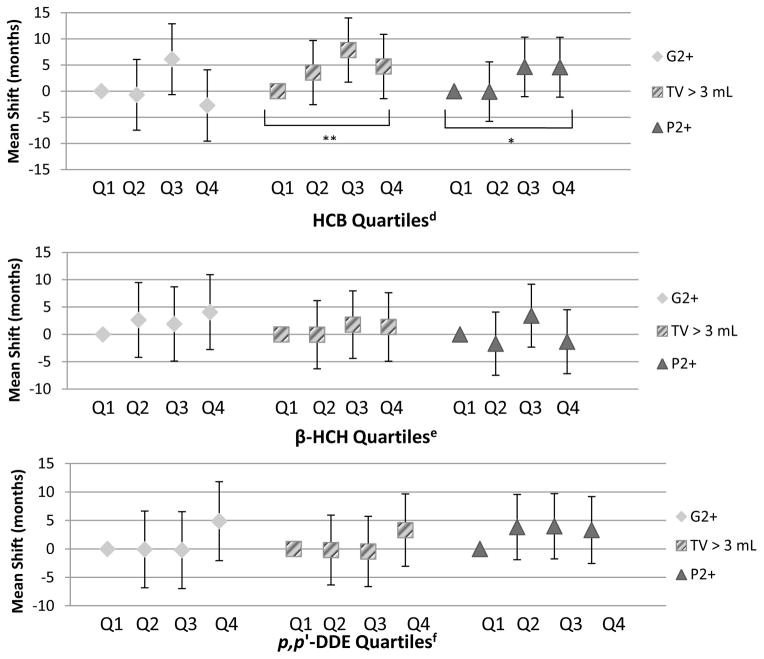Figure 1. Adjusted Mean Shifts in Age at Pubertal Onset (Months, 95% CIs) by Quartiles of Wet-Weight Serum OCP Concentrations Among 350 Russian Boysa,b,c.
*p ≤ 0.05
**p ≤ 0.10
Shift in months is relative to Q1 (reference)
aG2+ model adjusted for baseline covariates: boys’ total serum lipids, birth weight, macronutrients (total caloric intake, percent calories from dietary carbohydrates, fat, and protein), blood lead levels; missing birth weight (n=1), macronutrients (n=3)
bTV > 3 mL model adjusted for baseline covariates: boys’ total serum lipids, birth weight, macronutrients (total caloric intake, percent calories from dietary carbohydrates, fat, and protein), blood lead levels; missing birth weight (n=1), macronutrients (n=3)
cP2+ model adjusted for baseline covariates: boys’ total serum lipids, macronutrients (total caloric intake, percent calories from dietary carbohydrates, fat, and protein), blood lead levels, maternal age at birth, household income; missing macronutrients (n=3), household income (n=1), maternal age at birth (n=2)
dHCB wet-weight quartiles (Q1–Q4, pg/g serum): Q1: 169–516; Q2: 517–751; Q3: 752–1,156; Q4: 1,157–15,482
eβ-HCH wet-weight quartiles (Q1–Q4, pg/g serum): Q1: 209–567; Q2: 568–814; Q3:815–1,294 Q4: 1,295–13,732
fp,p′-DDE wet-weight quartiles (Q1–Q4, pg/g serum): Q1: 261–907; Q2: 908–1,406; Q3: 1,407–2,327; Q4: 2,328–41,301

